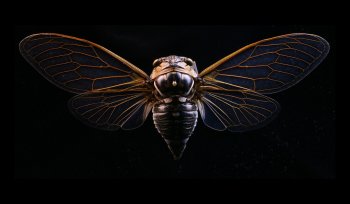Prairie Cicada
The Prairie Cicada’s (Megatibicen dorsatus) sound is unique to the tallgrass prairie. Because much of the prairie was converted to farming and other uses before it could be thoroughly studied, we may never know what the cacophony of insect songs sounded like in this distinctive habitat. Many of those insects are now as rare as original prairie remnants. The Prairie Cicada persists in some of those remnants as well as in small railroad prairies. The larval stage lives underground, feeding on roots. Below the surface, they are safe from fires and other disturbances. They emerge in mid-summer as adults, and you will notice their signature sound is lower in pitch than their “city cousin,” the Dog Day or Annual Cicada. In fact, people in urban areas aren’t likely to see or hear Prairie Cicadas.
The Illinois State Museum Entomology collection contains thousands of insects collected from all over the state. Information gathered with the insects can help scientists learn how they are distributed, what habitats they use, and how regularly they are encountered. For rare and declining species, museum collections can help us identify places where populations occurred historically. Knowing where a species occurred in the past can provide a starting point for new population surveys, help direct conservation efforts, or provide clues to a disappearance if the habitat at the location has changed.
For those lucky enough to find a patch of original prairie in July or August, watch and listen for the Prairie Cicada. Its black and orange coloration is striking. Anderson Prairie in Pana, Illinois, is a railroad prairie remnant that still has a good population of prairie cicadas. See and hear them in this video.





